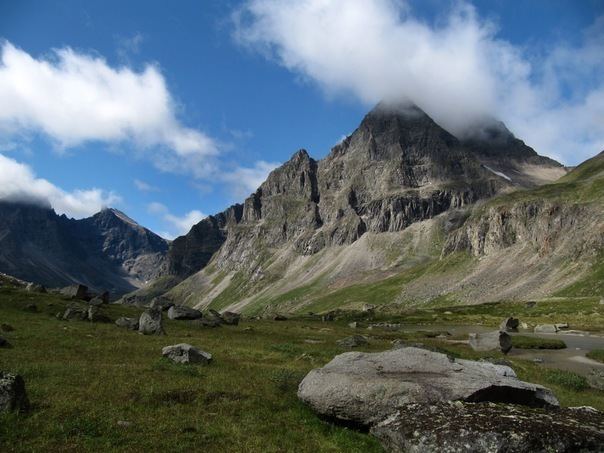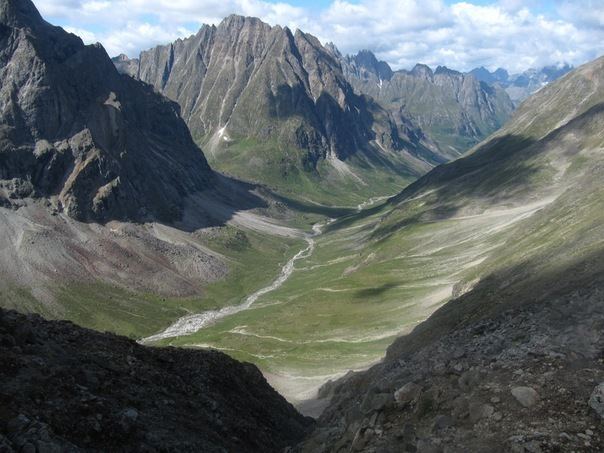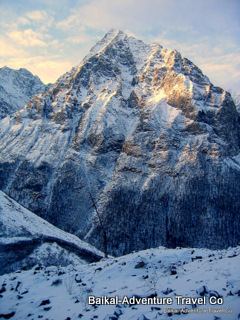Peak Pik BAM Length 250 km (160 mi) | Elevation 3,072 m (10,079 ft) Width 50–60 km (31–37 mi) Periods Proterozoic, Eoarchean | |
 | ||
Oblast/Krai | ||
The Kodar Mountains (Russian: Кода́р) are a mountain range in the Transbaikal region of Siberia, Russia. The name Kodar is derived from "khada", an Evenki word for rock.

Geography

The Kodar Mountains are part of the Stanovoy Highlands, which range from the northern tip of Lake Baikal to the Olyokma River. Lying within the Baikal Rift Zone, the area is prone to earthquakes. The range is bounded by the Vitim and Chara rivers, both tributaries of the Lena. The Apsat River flows through the range.

The topography consists of narrow, deep valleys that descend over 1,000 meters (3,300 ft) from the surrounding terrain. The Kodar range is the highest in the Transbaikal region with its tallest peak, Pik BAM (Baikal Amur Magistral), rising 3,072 meters (10,079 ft). According to a 2013 study, the range contains 34 glaciers. With the exception of some tropical glaciers, they are the most isolated glaciers the world, over 1,200 kilometers (750 mi) away from any other glacier. The glaciers are small, at most 2.1 kilometers (1.3 mi) in length.
The area experiences a subarctic climate, with the Siberian High resulting in very low temperatures and precipitation from November to March. Meteorological measurements taken in 1960s reported between 850 and 1,000 millimeters (33 and 39 in) of precipitation a year at an elevation of 2,500 meters (8,200 ft), with 50 percent falling as snow. Although snow can occur any time of year, 80 percent falls in late Spring and early Autumn. The snow line is between 2,200 and 2,600 meters (7,200 and 8,500 ft).
